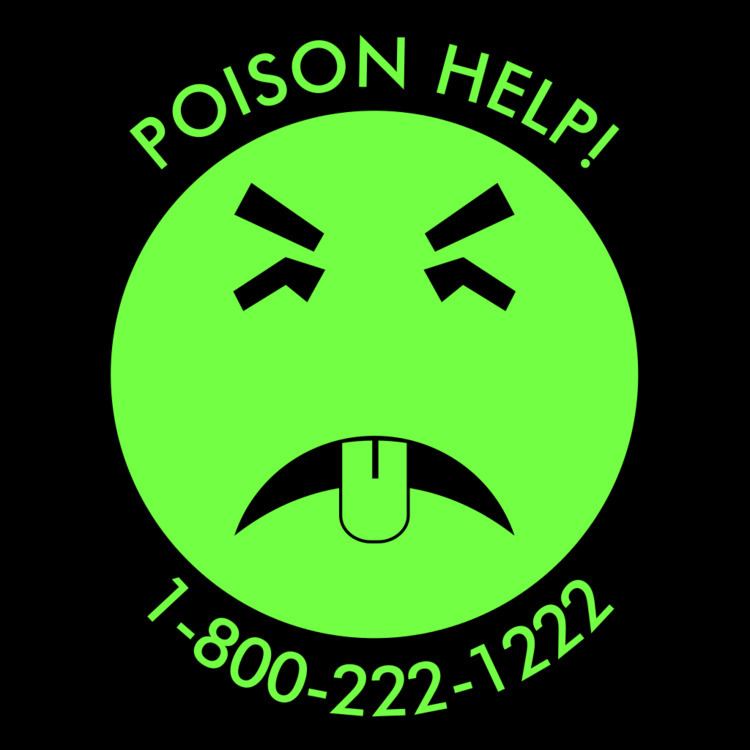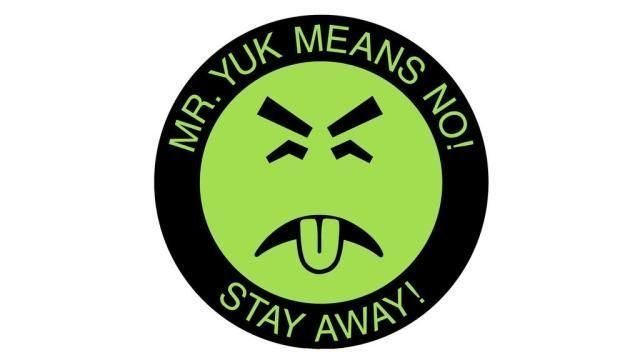 | ||
Mr yuk commercial
Mr. Yuk is a trademarked graphic image, created by the Children's Hospital of Pittsburgh, and widely employed in the United States in labeling of substances that are poisonous if ingested.
Contents

Mr yuk full theme
Overview

To help children learn to avoid ingesting poisons, Mr. Yuk was conceived by Dr. Richard Moriarty, a pediatrician and clinical professor of pediatrics at the University of Pittsburgh School of Medicine who founded the Pittsburgh Poison Center and the National Poison Center Network. Moriarty felt that the traditional skull and crossbones representing poison was no longer appropriate for children; Congressman Bill Coyne later said that by the 1970s the symbol was "associated with swashbuckling pirates and buccaneers rather than with harmful substances". The Jolly Roger flag was used on breakfast cereals and chewing gum, and it was the insignia for Moriarty's local baseball team, the Pittsburgh Pirates.
The design and color were chosen when Moriarty used focus groups of young children to determine which combination was the most unappealing. Possible expressions were "mad" (crossed eyes and intense expression), "dead" (a sunken mouth and Xs for eyes), and "sick" (a sour expression with the tongue sticking out). Children were asked to rank the faces according to which they liked the best, along with the skull and crossbones, and the "sick" face was least popular. The shade of fluorescent green that was chosen was christened "Yucky!" by a young child and gave the design its name.
Mr. Yuk was first introduced in Pittsburgh in 1971. Over time, the use of Mr. Yuk stickers has gained a certain amount of nationwide usage in the United States. Mr. Yuk stickers usually contain phone numbers of poison control centers that may give guidance if poisoning has occurred or is suspected. Usually, stickers may carry a national toll-free number (1-800-222-1222 in the United States). In some areas, local poison control centers and children's hospitals issue stickers with local numbers, under license. Such an example is in Pittsburgh, where the telephone number for the Poison Control Center is 681-6669.
A public service announcement was also produced in the 1970s featuring a theme song.
Effectiveness
At least two peer-reviewed medical studies (Fergusson 1982, Vernberg 1984) have suggested that Mr. Yuk stickers do not effectively keep children away from potential poisons and may even attract children. Specifically, Vernberg and colleagues note concerns for using the stickers to protect young children. Fergusson and colleagues state that "the method may be effective with older children or as an adjunct to an integrated poisoning prevention campaign".
To evaluate the effectiveness of six projected symbols (skull-and-crossbones, red stop sign, and four others), tests were conducted at day care centers. Children in the program rated Mr. Yuk as the most unappealing image. By contrast, children rated the skull-and-crossbones to be the most appealing.
The Mr. Ouch symbol, developed by the National Electrical Manufacturers Association (NEMA) to warn children about electrical hazards, has a similar design and strategy.
Use restrictions
Mr. Yuk and his graphic rendering are registered trademarks and service marks of the Children's Hospital of Pittsburgh of UPMC, and the rendering itself is additionally protected by copyright. This means that the name and graphic image cannot be used without a license from the owner—unlike the skull and crossbones symbol, which is in the public domain.
The Children's Hospital of Pittsburgh of UPMC gives out free sheets of Mr. Yuk stickers if contacted by mail.
Mr. Yuk materials can also be ordered online from the University of Pittsburgh.
